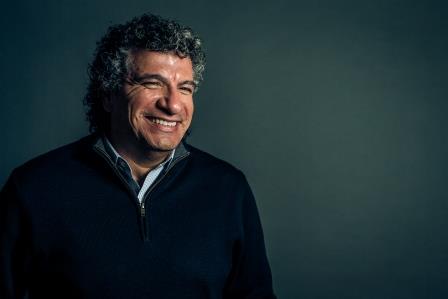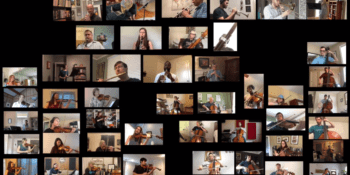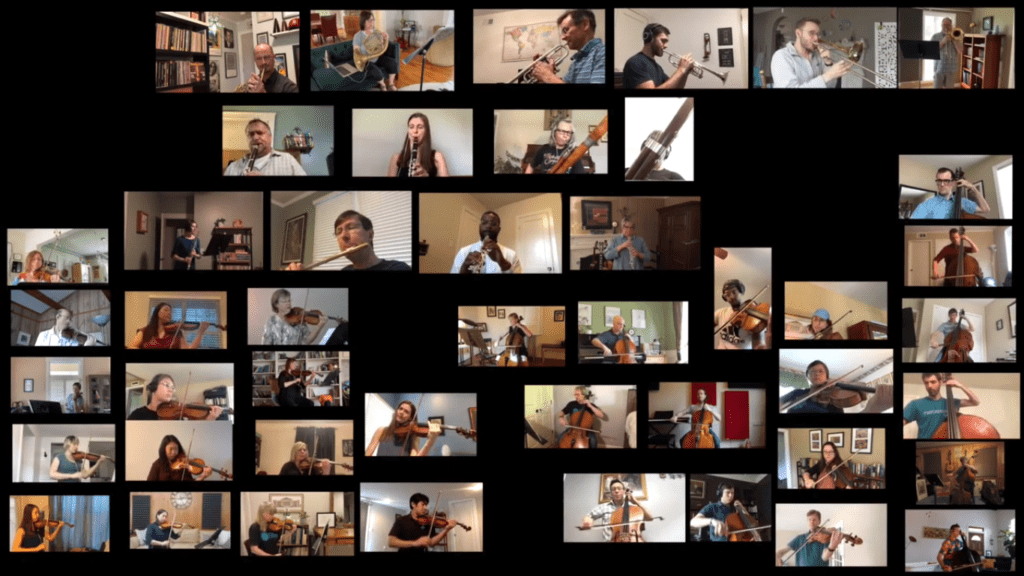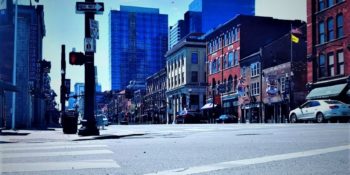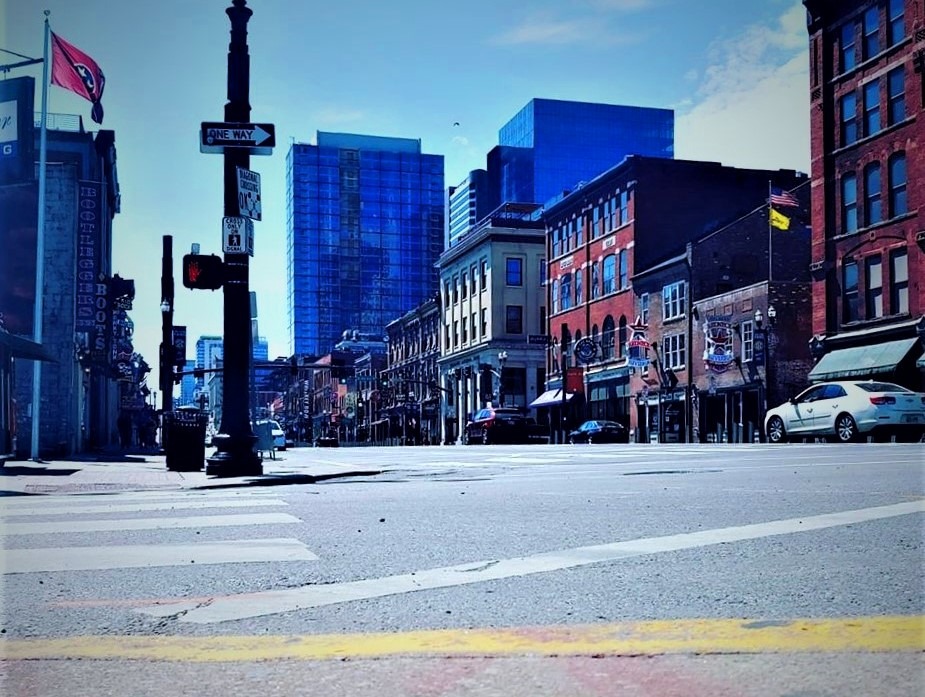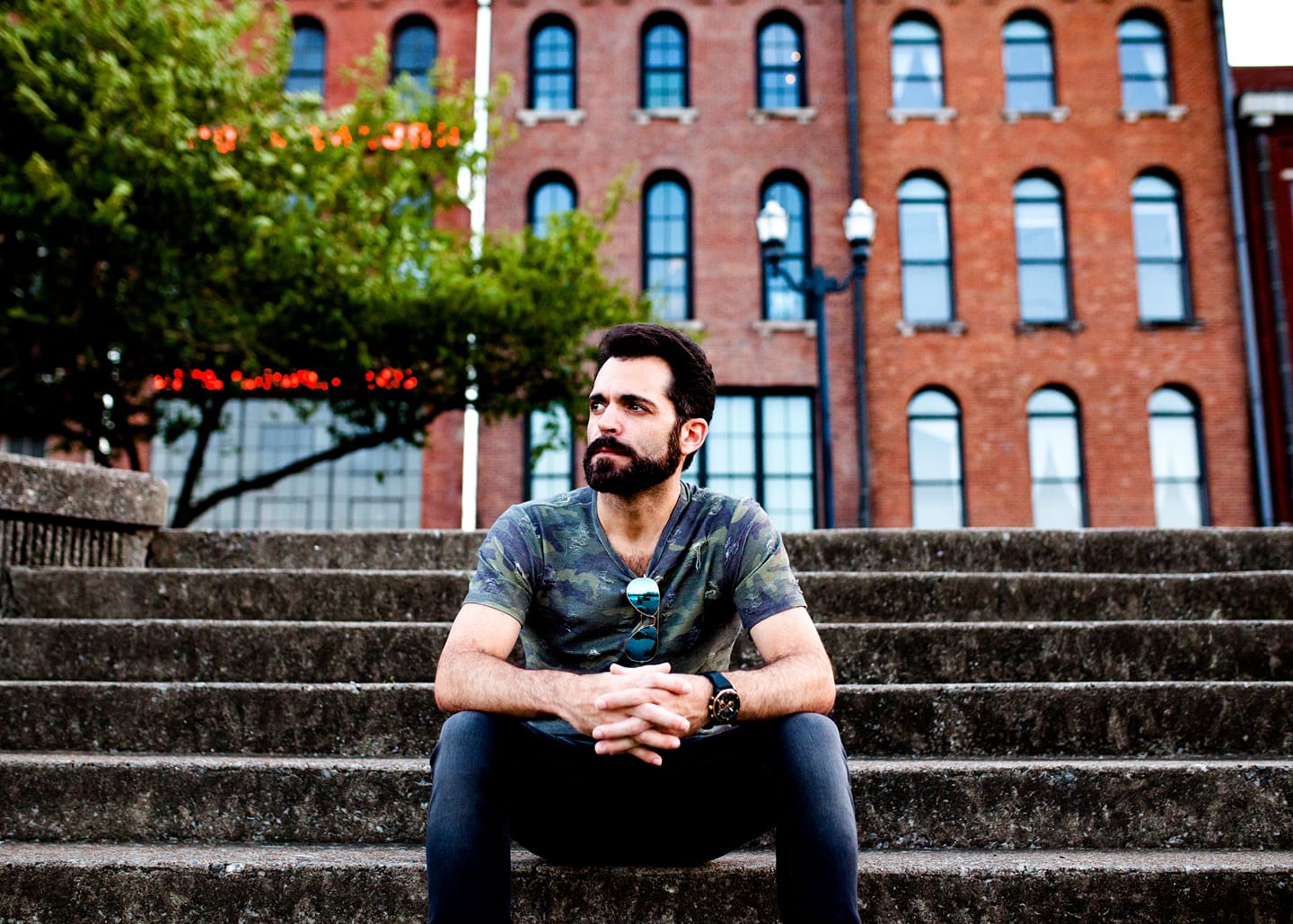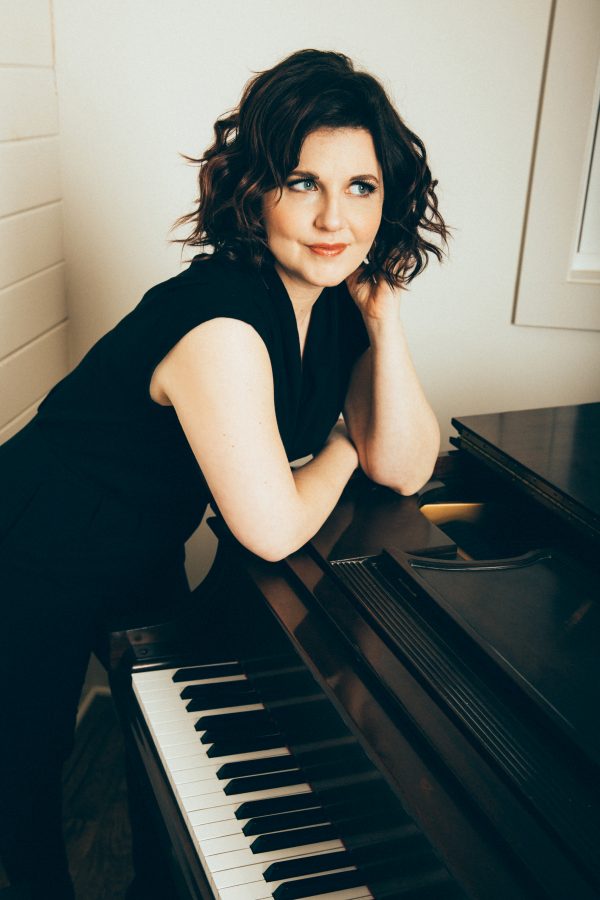Hope from the Nashville Opera
Can You Imagine a Beach-Party Themed Cinderella Next June? Nashville Opera can!
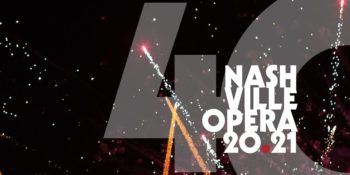
In the most wonderful sense of optimism and a little more than a decent dose of stubbornness, Nashville Opera has released their schedule for next season, a celebration of their 40th anniversary and it looks to be a doozy!
One Vote One
The season opens on September 25-27 with a commission, N.O.’s first, in a performance of the election day drama One Vote One with music composed by Tennessee native

David Ragland and the libretto by Mary McCallum. Originally hailing from Chattanooga, Ragland has been on the Nashville scene for some time now, I first heard his music in his beautiful arrangement of spirituals at the Upon these Shoulders celebration at Fisk University in 2017, and he made his directorial debut with the Nashville Opera during the 2013-14 season in their production of David Lang’s “The Difficulty of Crossing a Field.” His Steal Away was originally scheduled with Oz Arts in April, but had to be cancelled because of COVID19. McCallum, who has written for stage and screen including Singleville (2018) and the fictional historical play Six Triple Eight (2015), is a wise choice for the libretto.
These two artists will be able to share their talents for historical depiction in One Vote One with a plot that includes suffragist Frankie Pierce (played by Jennifer Whitcomb-Oliva) and Civil Rights activist Diane Nash (played by Brooke Leigh Davis) as they work to convince a young Gloria (played by Tamica Nicole Harris) that her vote counts.. Never an organization to shy away from a political topic, Director John Hoomes and company are working with the MTSU Center for Historic Preservation to create a study guide that meets Tennessee standards for U.S. history.
Opera Jukebox
In October, the company will present the newest in pandemic operatic genres, the “Opera Jukebox.” Not much to say here except that money talks and I hope the rich folks seek to hear something other than the same old chestnuts like “Nessun Dorma,” “L’amour est un oiseau rebelle'” or the flower duet.
Rigoletto
Then in April, if one can imagine the end of the pandemic, the return of our economy, and a post-election 2020 world, the company has scheduled a new staging of
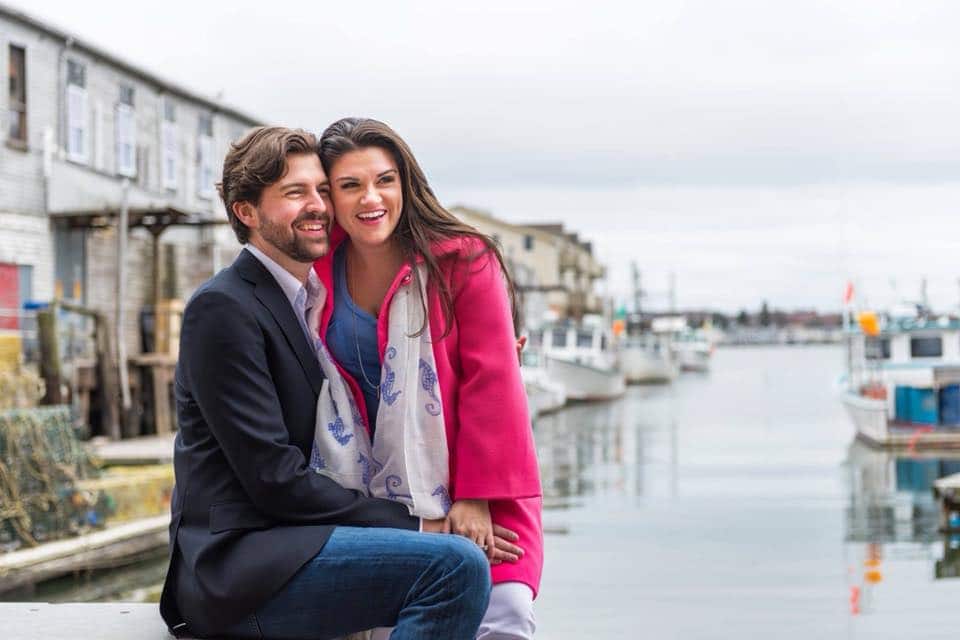
Verdi’s Rigoletto in a film noir style. Likely to be the highlight of the artistic season in Music City (ok, so maybe there wont be much competition) the staging will include its own original film noir by Penumbra Entertainment, winner of the Nashville Opera Noir Filmfest. However, the cast is quite exciting too; as Nashville Opera describes the production: “The wise-cracking Rigoletto (Michael Mayes), despised by all save his beautiful daughter (soprano Kathryn Lewek in her first appearance as Gilda), is powerless to protect her from the lechery of his boss, Duke (Zach Borichevsky also making his role debut).” Notably, the production was initially planned for last season but the world stopped. From Lewek’s facebook of March 16th, 2020:
My husband Zach Borichevsky, tenor and I are disappointed about the cancellation of Nashville Opera’s production of Rigoletto in which we were to make our role debuts as Duke and Gilda, respectively. However, we are so grateful to the company, as they are paying us a portion of our contract. It’s amazing to see regional companies like Nashville, led by John Hoomes, set the example for other companies. We have just donated a part of our earnings to the AGMA (American Guild of Musical Artists) artist relief fund. I hope all who have the means to make a small or large donation will consider…”
Cinderella
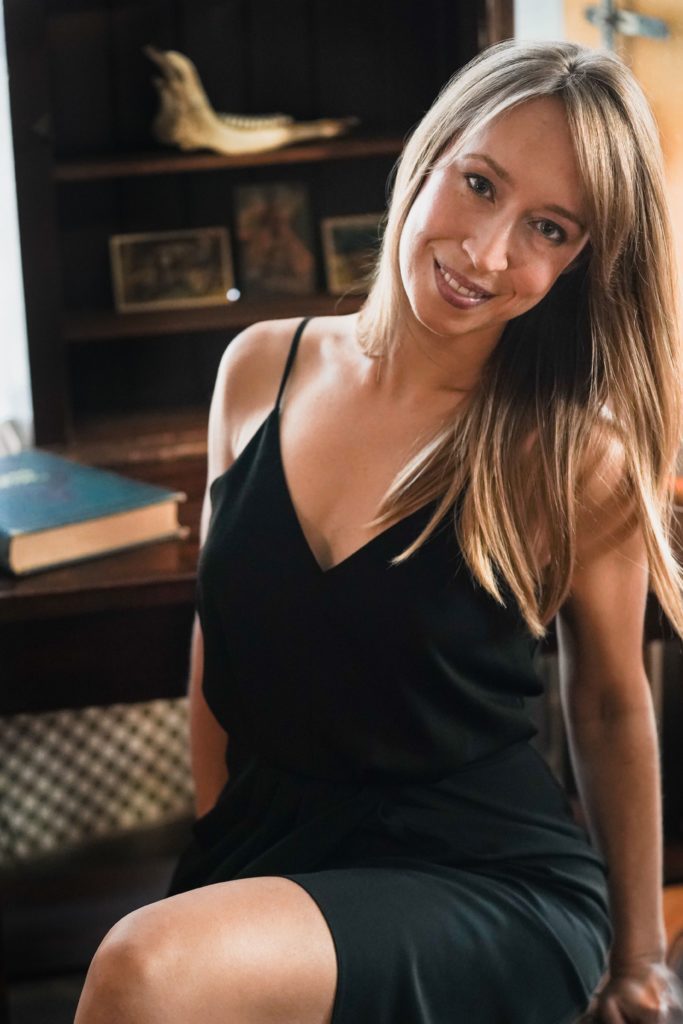
More than half of businesses that closed during the pandemic won’t reopen
The reviews site has been keeping tabs on closures since March. Businesses can update their status to temporarily or permanently closed on Yelp.
As of August 31, nearly 163,700 businesses on Yelp have closed since March 1, the company said, marking a 23% increase from July 10. Of those, about 98,000 say they’ve shut their doors for good.
Of all closed businesses, about 32,100 are restaurants, and close to 19,600, or about 61%, have closed permanently.
Read MoreAt the OZ Arts Website:
Burdens from a Distance
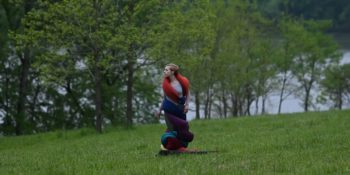
Carrying burdens: a universally accepted part of life and timely theme as the world shares a collective burden. Over the course of three years, speaking to hundreds of people from all walks of life, Jana Harper discovered the same underlying concerns we all share: “our loved ones, our futures, our planet, and of course, our health.” This Holding was created from the exploration of these burdens, portraying this portion of the human experience in a raw, beautiful, and thought-provoking way. During a period when many feel more alone than ever in their lives, Harper holds a fitting sentiment about her work: “If This Holding could leave you with one feeling, I hope it is the knowledge that you are not alone.”
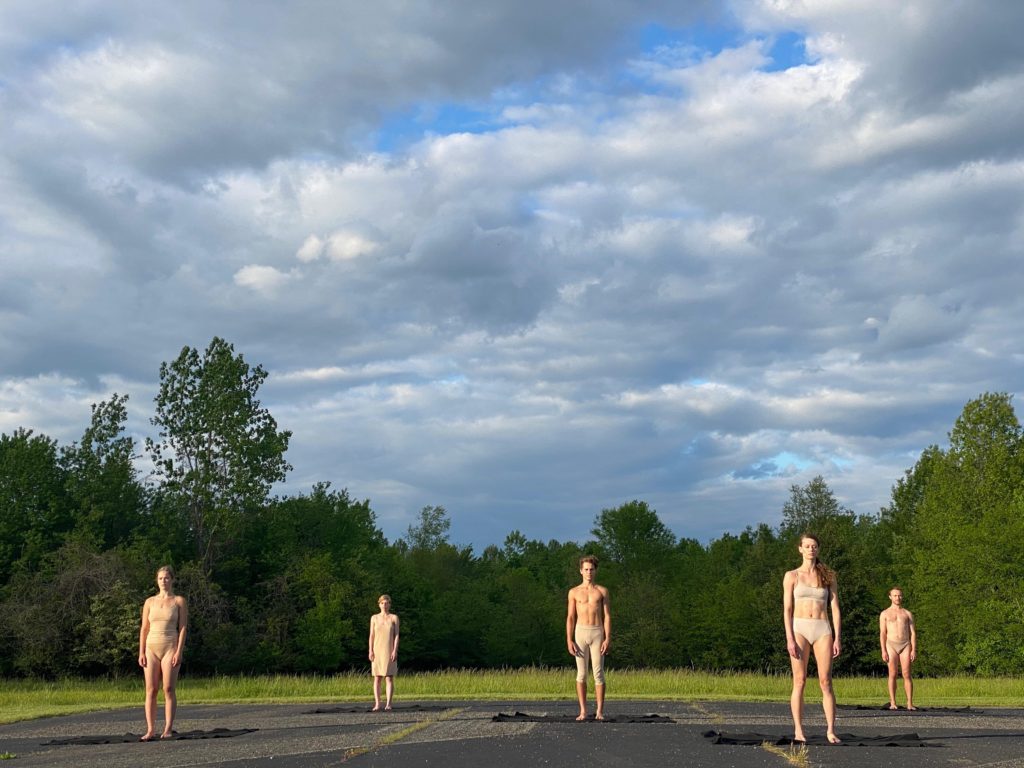
This Holding: Traces of Contact, rather than being performed live, was presented as an online film event by OZ Arts Nashville in response to the widespread healthy and safety concerns due to the COVID-19 pandemic. Originally conceived for the stage, once rehearsals were stymied by prohibited in-person gatherings and the assembly of a large audience was out of the question, the entire creative team quickly pivoted in order to re-imagine the work for film. In a live Q & A session following the performance, members of the team commented about the transition of the creative process and how the changed conditions impacted their interpretations and performances of the work as a final product. Despite the circumstances, the production team was thrilled with the outcome, recognizing the performance as a unique product of its time, and voicing appreciation for the ability to utilize uncommon settings and the beauty of nature as part of the narrative.
Divided into seven acts, the film event honed in on individuals, duos, or divided groups of dancers, seemingly socially distanced. Soloists and distanced group dancers interacted with artistic objects, representative of various burdens one might carry, while duos interacted only with one another, portraying various relationship complexities and the burdens that attend.
…the dancer contemplated it, dragged it, entwined herself in it, and attempted to walk while bound by her affliction.
Each solo act honed in on a single dancer, interacting with objects in a tangible representation of human hardship. The first, Emma Morrison, appeared in a verdant
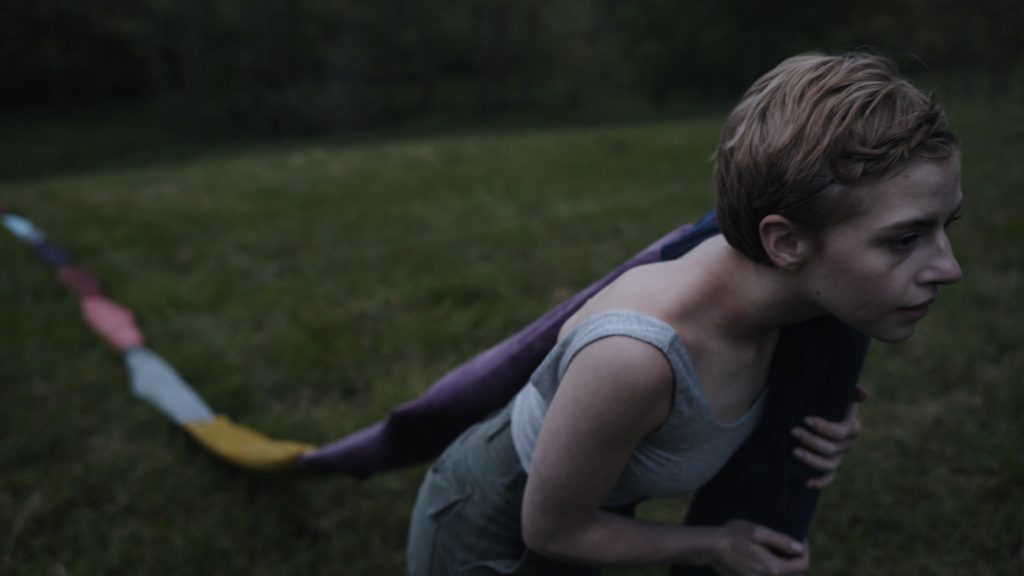
landscape as she related to and struggled with an incredibly long, seemingly endless, artistically rendered “burden.” Sewn from many lengths of different colored fabric and evidently filled with something heavy, the prop resembled a Burmese python as the dancer contemplated it, dragged it, entwined herself in it, and attempted to walk while bound by her affliction. The second soloist (David Flores) appeared in front of a warehouse at night, attempting to pick up and carry a myriad of colored sandbags, lifting one after the other in order to take with him. The ceaseless struggle of picking up bag after bag, bearing their weight, attempting to carry them elsewhere, then only to have one fall, then another, and then another, was difficult to watch and felt painfully authentic.
All three duets seemed to cast light on different types of human relationships, each in its own unique stage, with unspoken intricacies between the two people. The first duo appeared passionate and lustful, yet timid and reserved at times. Close-up person to person contact, combined with the natural landscape and stunning cinematography, created a sense of intensely personal sensuality and exclusivity. The second duo portrayed a more weathered relationship, undoubtedly with history and baggage, but with maturity and contemplation. Rather than looking for the world in one another, the two were stretched out on the forest floor in repose, facing outward in the same direction, pondering the concerns of life together. The final duo characterized a more platonic friendship, filled with love and devotion, yet not without disappointment and hurt. Unexpected combinations of movements channeled quickly changing emotions, ranging from jagged confusion and resentment to flowing warmth and adoration.
The two ensemble numbers, despite appearing in disparate landscapes, functioned similarly in spacing, with each dancer relegated to six feet away from any of the others. The first group number involved each dancer wearing a large sheet of black fabric, wrapped about their body and limiting their range of motion. Over the course of the act, the film brilliantly captured the unlikely landscape combination of greenery and black tarmac, the overarching feeling of unrest and discomfort, and each dancer’s individual relationship with their black burden.
The final act featured the largest number of dancers of any movement, positioned six feet from one another, each enclosed by a snake-like, multi-colored art prop, arranged in a circle around their area. With each dancer wearing a unique, brightly colored outfit, the group of movers stood out against a stark, rooftop pavement scene, devoid of

nature or greenery. As the camera panned and re-focused on smaller groups or independent dancers, each dancer seemed to choose from a library of movements suited to or chosen for their character. One flowed endlessly from one new movement to the next, while another performed a sequence on repeat. Some moved with extroverted emotion, attempting to interact with the world around them, while others looked inward, ignoring outside factors and expressing restrained, introspective affliction. Upon observing the dancers individually as well as in combination, a spectator cannot help but begin to identify on a personal level, watching each character battle their own demons, surrounded by the blunt landscape of concrete structure, yet the vibrant color of human existence.
Jana Harper’s vision for this work came to life with the assistance of movement and assistant director Rebecca Steinberg, composer and musician Moksha Sommer, and filmmaker Sam Boyette. Steinberg’s originality and adaptability to a film setting brought an intimate, confidential feel to the movement of the work, highlighting the strengths of each dancer and utilizing existing relationships to re-imagine multi-person numbers during a time of separation. Sommer’s original score brought warmth and interest to trying subject matter, highlighting sounds of nature in and amongst electronically programmed and live instrumental music. Boyette’s videography beautifully captured the energy, emotion, and depth of each dance number, combining all seven movements to create a captivating work of art.
The collaboration that took place in order to create and carry out This Holding: Traces of Contact is a moving reminder of how unified and connected we have the power to be, whether together or apart physically. Recognizing the burdens that unify us is just another means of learning how to move forward together. Perhaps Harper got her wish—after watching this performance, one can feel only gratitude and hope, knowing there is strength and power in shared experiences with others, trials and tribulations included.
From the Pedestrian Bridge:
Chatterbird Performs Honstein

Down Baby Down by New York composer Robert Honstein (b. 1980) is a piece for percussion quartet in six movements. One imagines that the composition process started with the composer making a comprehensive list of noises that can be produced with a cello before unceremoniously crossing off “use a bow”. The piece, which runs just over 20 minutes, features cello, desk bells, woodblocks, and (what appears to be) 18 gallon storage bins with kick pedals attached. Taps, knocks, dings, booms, slaps, plucks, and hums are used intermittently as the performers mirror each other’s movements across a table adorned with a myriad of small percussion toys.
The piece develops slowly, but attention and interest is earned through an ever changing landscape of sounds and textures. The video, featuring Chatterbox’s Jesse Strauss, Maya Stone, Celine Thackston, and Aaron Walters is well performed, well shot, and well produced. Downtown Nashville and Cumberland Park serves as a background for the recording. An extra layer of interest is added by imagining the curious looks the quartet undoubtedly received from bachelorette parties finding their way to Broadway over the walking bridge in the video’s background. It’s a fun time! Check it out here: https://vimeo.com/415016631#at=1190 or on the homepage of their website: https://www.chatterbird.org/ or just click below!
Down Down Baby, by Robert Honstein from chatterbird on Vimeo.

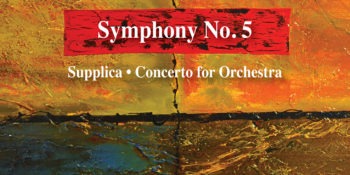
 Three weeks after cancelling the 20/21 season, the Nashville Symphony released a new recording featuring the music of the Grammy and Pulitzer Prize winning composer Christopher Rouse. This recording, the 21st for the Nashville Symphony under Naxos’ American Classics label, is a welcome addition to the fruitful collaboration between the Nashville Symphony and American composers. This is the second installment of a trio of recordings to be released this summer: Aaron Jay Kernis’
Three weeks after cancelling the 20/21 season, the Nashville Symphony released a new recording featuring the music of the Grammy and Pulitzer Prize winning composer Christopher Rouse. This recording, the 21st for the Nashville Symphony under Naxos’ American Classics label, is a welcome addition to the fruitful collaboration between the Nashville Symphony and American composers. This is the second installment of a trio of recordings to be released this summer: Aaron Jay Kernis’ 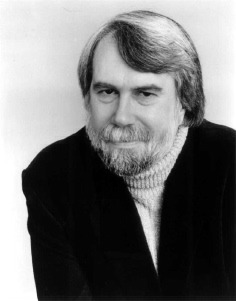
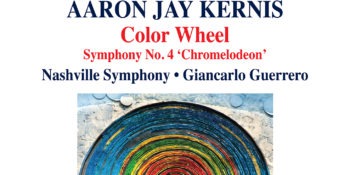
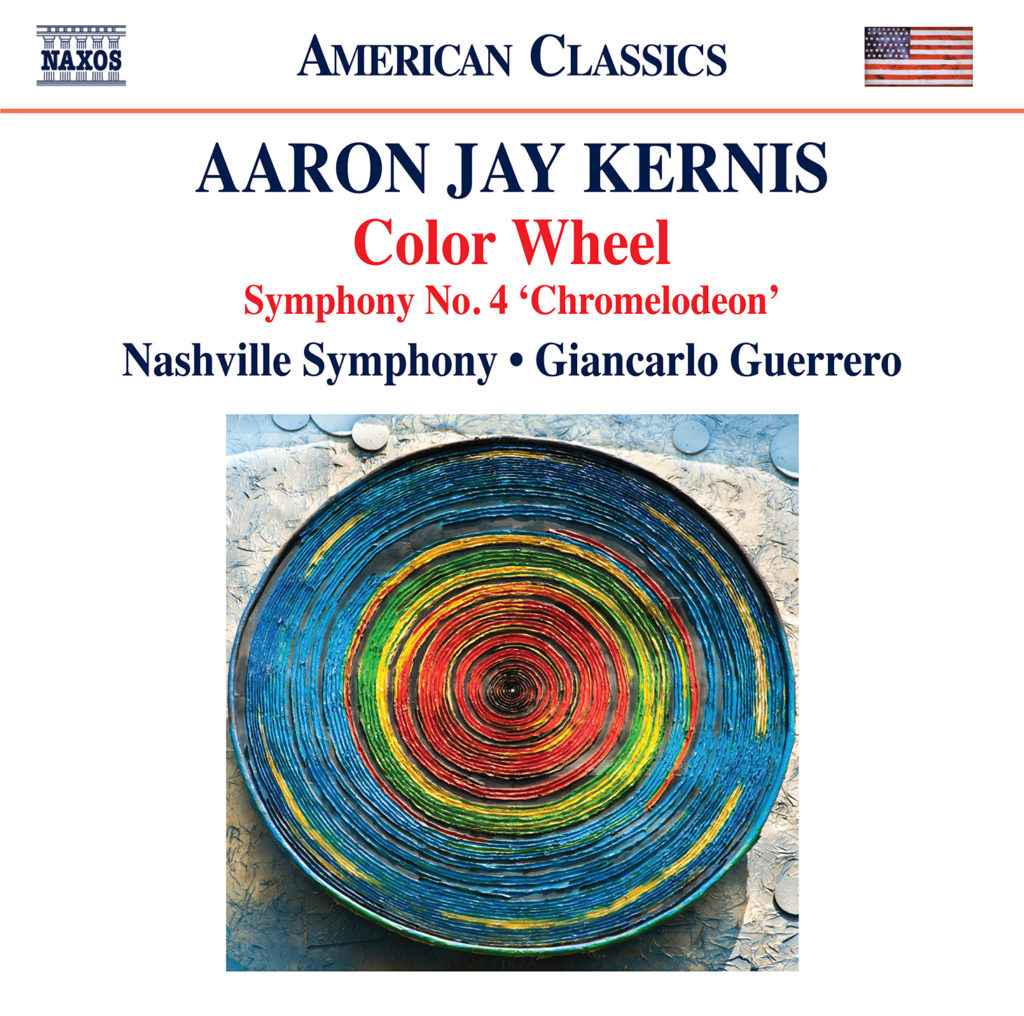 The Nashville Symphony just released it’s newest recording on Naxos’s American Classics series. Featuring two works by Pulitzer, Grammy and Grawemeyer Award winning composer Aaron Jay Kernis, Color Wheel (2001) and Symphony No. 4 ‘Chromelodeon (2018), this recording will complement well the Symphony’s already extensive collection of contemporary music recordings (listed here:
The Nashville Symphony just released it’s newest recording on Naxos’s American Classics series. Featuring two works by Pulitzer, Grammy and Grawemeyer Award winning composer Aaron Jay Kernis, Color Wheel (2001) and Symphony No. 4 ‘Chromelodeon (2018), this recording will complement well the Symphony’s already extensive collection of contemporary music recordings (listed here: 